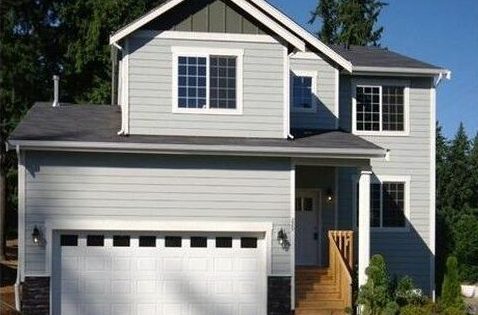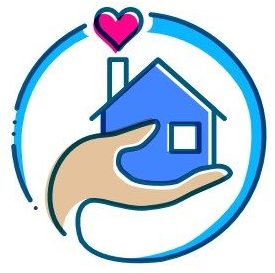
Crisis in Kitsap
In order to find permanent solutions to any problem, the cause must be accurately diagnosed and understood. There are various causes for homelessness, but according to most professionals in the field, the number one cause of homelessness is a lack of affordable housing. Kitsap County finds itself in a housing affordability crisis that appears to be getting worse each month, plunging more families and individuals into homelessness each week. But the homeless problem is more complex than just needing affordable housing – there is also a shortage of supportive housing for those with disabilities.
The problem of rising housing affordability forced many workers and working families into homelessness. The shortage of affordable housing has created a severe impact on a large percentage of Americans; those struggling with alcoholism, drug addiction, or mental illness, as well as those who do not. And for many elderly or disabled who previously, before 1980, could get by on their social security or disability income, now find no housing to be affordable, forcing them into homelessness.
Historical Context
Our current homeless crisis did not come about on its own, but was created over many years, partly due to regulatory decisions which limited the creation of affordable housing, and in other cases caused the destruction of existing affordable housing.
This crisis in Kitsap County is a multi-faceted problem that is a result of several factors, both macro-economic (i.e.: causes that are national in scale, such as restrictions in favorable financing availability for multi-family housing construction and purchase) and micro-economic (i.e.: local factors, such as tight housing supply in Seattle spilling over into Kitsap County), resulting in “the perfect storm” for affordable housing, especially for those in the lowest income bracket. In Kitsap County, between 2015 and 2018, average apartment rents have increased over 40%. Since the year 2000, rents have nearly doubled in the county.
A large part of the homeless equation is related to poverty. America is one of the richest nations in the world, but has a high poverty rate of 11.4%. Thus, the US is one of the most unequal countries on the planet in terms of wealth distribution. The demand for housing from the wealthier part of the population helps drive up prices, but the large population segment with low income cannot afford the higher prices, resulting in homelessness. One of the challenges that gets people stuck in homelessness is deep poverty. Many people in our community become stuck in the cycle of poverty throughout generations. However, if you talk to our residents, you will also often find either a disconnect in family relations or a complete lack of familial ties.
Additionally, there is a great racial disparity in the population of people experiencing homelessness. People of Color tend to face homelessness at higher rates than White people, for which historical, institutional racism is mostly to blame. Different people of Color share similar histories of forced labor and segregation that created a system that is comfortable denying rights and socioeconomic opportunities to this population. Redlining, or historical government-built housing discrimination, discourages People of Color from making investments, which reinforces generational poverty. The cycle continues as moving from the redlined neighborhoods that have negative impacts on health is challenging with a lack of capital and modern discrimination. For People of Color, homelessness is one symptom of systemic inequality.
How Does KHOC Help?
KHOC helps provide affordable housing to some of the nation’s most vulnerable populations. In 2019, seniors made up 23% of the people experiencing homelessness living in shelters, up from 16.4% in 2017. With the rising cost of housing, including the rising cost of housing construction, seniors living on a fixed budget have been squeezed. Those living on only social security have especially been hit hard. But if you look at the even more vulnerable category, seniors that have disabilities – either physical or mental – which keeps them from being able to work, the situation can be dire.
One of the biggest issues some people with mental illness face is stigma, which affects access to housing. A mental health diagnosis has no impact on housing, as most people do live independently in apartments or in their own homes. Others may have cascading effects of mental illness that can leave them in a precarious housing situation. Those with severe mental health diagnoses often struggle with reality testing that can lead to disorganized thoughts and unexplained behavior. New medications and stable living environments enable people to better organize their thoughts and control their behaviors. The Housing First model was adopted by KHOC to strengthen the positive outcomes of medication and therapeutic services on people with severe and chronic mental health issues. Experiencing homelessness, moving from corner to corner trying to find a safe place to sleep, can make it extremely difficult to stay on medications. Having a safe and secure place to live is an important part of recovery, along with access to services that enable those with mental health conditions to live as independently as possible. Shared housing and other types of supportive housing combine housing and services in an enclosed and supportive setting. Supportive housing has been a practice that has been used all over the U.S. for decades.
Kitsap Homes of Compassion has grown greatly in the past five years. With limited funds, we have been able to change the lives of hundreds traditionally marginalized and vulnerable people. Our program provides not just a place to sleep, but a community with opportunities to thrive. The KHOC model addresses health inequities and institutional racism by providing services to people experiencing homelessness, who are often ignored in policy and program development, to better support their access to health care and human services. KHOC provides homes to as many people as possible, as quickly as possible, to improve the health outcomes and general stability of people experiencing homelessness and housing insecurity in Kitsap County.
